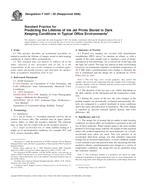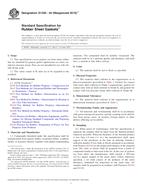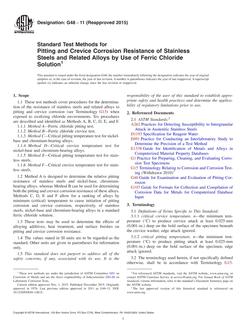1.1 This test method describes an analytical procedure for identifying and quantifying the masses of individual volatile organic compounds (individual VOCs or IVOCs) that are emitted into a flow of air from carpet specimens and collected on sorbent sampling tubes during emissions testing.
1.2 This test method will be used in conjunction with a standard practice for sampling and preparing carpet specimens for emissions testing. If a specific chamber practice is not available for the carpet specimens, this standard test method should be used in conjunction with approved standard practices for emissions testing and sample preparation.
1.3 When used in conjunction with standard practices for carpet specimen preparation and collection of vapor-phase emissions , this test method will provide a standardized means of determining the levels of IVOC in the exhaust stream of the emissions test chamber/cell. If this test method is used with a reliable practice for emissions testing, these IVOC levels can be used to determine the emission rate from a unit quantity (usually surface area) of the sample material under test.
1.4 VOCs in the exhaust stream of an emissions test device are collected on thermal desorption tubes packed with a specific combination of sorbents using active (pumped) sampling. (See Practice D 6196 for a more general description of vapor collection using pumped sampling onto sorbent tubes). The samples are analyzed by thermal desorption (TD) with gas chromatography and mass spectrometry detection (GC/MS) and/or flame ionization detection (FID) depending upon the requirements of the specific materials emissions testing/certification protocol.
1.5 This test method can be used for the measurement of most GC-compatible organic vapors ranging from the approximate volatility from n-hexane to n-hexadecane (that is, compounds with vapor pressures ranging from 16 kPa to 4 X 10-4 kPa at 25°C). Properties other than a compounds vapor pressure such as affinity for the sorbent may need to be taken into account. Compounds with vapor pressures outside this range may or may not be quantifiable by this method. However, qualitative data concerning the identity of a compound(s), outside the stated volatility range for quantitation, may still be useful to the user. The method can be applied to analytes over a wide concentration range – typically 1 µg/m³ to 1 mg/m³ concentration of vapor in the exhaust air from the emission cell or chamber.
1.6 This test method is not capable of quantifying all compounds which are emitted from carpets. See the appropriate test practices/methods for determining other compounds that are not amenable to analysis by gas chromatography (that is, Test Method D 5197 for the determination of aldehydes).
1.7 This standard does not purport to address all of the safety concerns, if any, associated with its use. It is the responsibility of the user of this standard to establish appropriate safety and health practices and determine the applicability of regulatory limitations prior to use.
Product Details
- Published:
- 04/01/2007
- Number of Pages:
- 10
- File Size:
- 1 file , 170 KB


